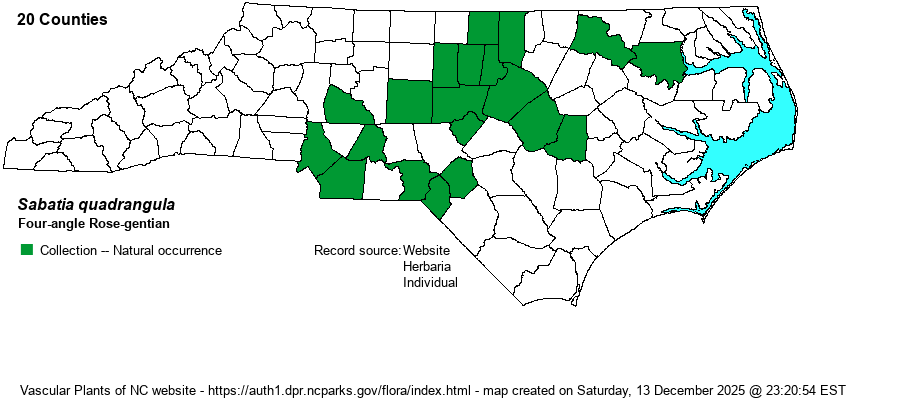| Author | Wilbur | |
| Distribution | Scattered over the eastern half of the Piedmont, and sparingly into the upper Coastal Plain, including the Sandhills region. Ranges east to Bertie, Wayne, Hoke, and Scotland counties; and west to Rowan and Mecklenburg counties.
This is a Piedmont and Coastal Plain species, ranging from eastern VA south to northern FL, and west to southern AL. | |
| Abundance | Rare to uncommon in the eastern half of the Piedmont and part of the Sandhills; very rare in the western Coastal Plain farther to the northeast. This is a Watch List species. | |
| Habitat | This is a species of mesic to damp hardpans, perhaps where rock lies just below the surface, or at least in poorly drained soils, where water stands after a heavy rain. It occurs mainly in full sun to mostly sun, of powerline clearings, woodland borders, openings in woods (often in glades), damp meadows, and some loamy sand sites in the Sandhills. | |
| Phenology | Blooms from June to September, and fruits from August to frost. | |
| Identification | This is a poorly known species to most biologists, even though it occurs near the highest population centers in the state. It is a small and slender Sabatia, growing erect to only about 12-15 inches tall, with a distinctly square stem, hence the "quadrangula" in the name. The several pairs of opposite leaves are narrow, generally linear, about 1.5 inches long and only about 1/5-inch wide, and not thick or fleshy as in S. difformis, which also has a rather rounded stem. There are several short, opposite branches, at the ends of which grow one to several flowers on moderate pedicels. Each flower has 5 white petals, but each flower is only about 4/5-inch across, about the size of a penny or dime, as opposed to the quarter-sized flowers of S. difformis. Each does have a rather flat-topped inflorescence, but even so, when you see S. quadrangula in bloom, at much distance it looks somewhat like a whitetop aster (Sericocarpus spp.). But, if you bend down and take a closer look, you can see the yellow spots at the base of the petals that nearly all Sabatia species have. This is a difficult species to find, best done by walking powerline clearings in the lower Piedmont, especially where there are flat areas; it often is found in quite diverse places with much forb or grass diversity. | |
| Taxonomic Comments | None
| |
| Other Common Name(s) | Four-angle Sabatia | |
| State Rank | S2 [S2S3] | |
| Global Rank | G4G5 | |
| State Status | W7 | |
| US Status | | |
| USACE-agcp | FACW link |
| USACE-emp | FAC link |

